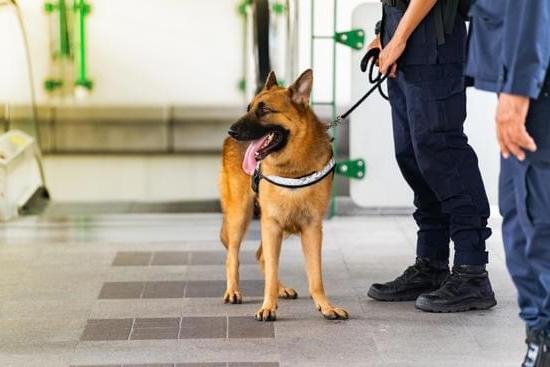There are a few key things to keep in mind when crate training a dog:
-The crate should be big enough for the dog to stand up, turn around, and lie down in comfortably.
-The crate should never be used as a punishment.
-The dog should be introduced to the crate slowly and rewarded for entering it.
-The dog should be allowed to exit the crate whenever it wants.
-The crate should be placed in a quiet, comfortable, and safe spot in the home.
-The dog should be allowed to sleep in the crate at night.
The first step in crate training a dog is to introduce the dog to the crate slowly. Place a few treats inside the crate and let the dog eat them. Once the dog is comfortable going into the crate, close the door for a few seconds and then let the dog out. Repeat this process until the dog is comfortable staying in the crate with the door closed.
Once the dog is comfortable with the crate, start using it as a place to confinement the dog when you’re not able to watch him. For example, when you’re eating dinner or taking a shower, put the dog in the crate. Start with short periods of time and gradually increase the amount of time the dog spends in the crate.
The crate should also be used as a place for the dog to sleep at night. Place the crate in a quiet, comfortable, and safe spot in your home and let the dog sleep in it.
If the dog starts to whine or bark when confined in the crate, don’t let him out until he stops. This will teach the dog that he can’t get out of the crate until he’s calm.
Crate Training A Dog Schedule
There is no one-size-fits-all answer to the question of how long it will take to crate train a dog, as the amount of time it takes to crate train a dog will vary depending on the individual dog’s temperament and personality. However, most dogs can be successfully crate trained in two to four weeks.
The key to successful crate training is to establish a regular crate training schedule and to be consistent with the rules that you establish for your dog. During the crate training process, always make sure that your dog has plenty of opportunity to relieve himself outdoors, and provide him with plenty of positive reinforcement when he does the right thing in the crate.
The following is a general guide to the crate training process:
1. Start by gradually introducing your dog to the crate, placing treats and toys inside to make it enticing.
2. Once your dog is comfortable entering and exiting the crate, begin closing the door for short periods of time.
3. Gradually increase the amount of time that your dog spends in the crate, making sure to provide plenty of opportunities for him to relieve himself outdoors.
4. Once your dog is comfortable spending long periods of time in the crate, you can begin using the crate as a place of confinement when you are not able to supervise him.
Should You Crate Train Your Dog
?
The answer to this question is a resounding “yes!” Crate training is one of the most effective ways to housebreak a dog, and it can also be used as a tool to help with obedience training.
A crate is a small, enclosed space that can be used to confine a dog for short periods of time. When used properly, a crate can be a safe and comfortable place for a dog to relax.
The first step in crate training is to introduce the dog to the crate. Place the crate in a quiet, comfortable place in your home and put a few treats inside. Let the dog explore the crate on his own and don’t force him to go inside. Once the dog is comfortable with the crate, you can start using it as a place to confine him when you’re not able to supervise him.
The key to successful crate training is to make sure the dog is comfortable and relaxed in the crate. If the dog seems anxious or stressed, you may need to take a slower approach to crate training.
Crate training can be a valuable tool for housebreaking a dog and can help with obedience training. When used properly, a crate can be a safe and comfortable place for a dog to relax.
How To Crate Train Your Dog In 9 Easy Steps
1. Start with a small crate that will be comfortable for your dog. The crate should be just large enough for your dog to stand up and turn around in.
2. Place the crate in a busy area of the house where your dog will spend a lot of time.
3. Feed your dog meals in the crate and put some toys inside.
4. Close the door to the crate while your dog is eating his meal.
5. Gradually increase the amount of time your dog spends in the crate.
6. Start to close the door to the crate while your dog is not eating.
7. Leave the dog in the crate for short periods of time while you are at home.
8. Leave the dog in the crate for short periods of time while you are not at home.
9. Gradually increase the length of time the dog spends in the crate.
How To Crate Train A Dog In An Apartment
If you’re living in an apartment and you want to crate train your dog, you’re going to need to make some modifications to the crate training process. Here are a few tips:
1. Make sure your dog has plenty of exercise before crating them. A tired dog is less likely to get restless in their crate.
2. Start with short periods of crating and slowly increase the amount of time your dog spends in the crate.
3. If your dog starts to get restless in their crate, give them a toy or bone to chew on to keep them occupied.
4. Don’t leave your dog in their crate for more than 8 hours at a time.
5. Make sure your dog has plenty of opportunities to relieve themselves outside.
6. Never use the crate as a punishment. crate training should be a positive experience for your dog.

Welcome to the blog! I am a professional dog trainer and have been working with dogs for many years. In this blog, I will be discussing various topics related to dog training, including tips, tricks, and advice. I hope you find this information helpful and informative. Thanks for reading!





